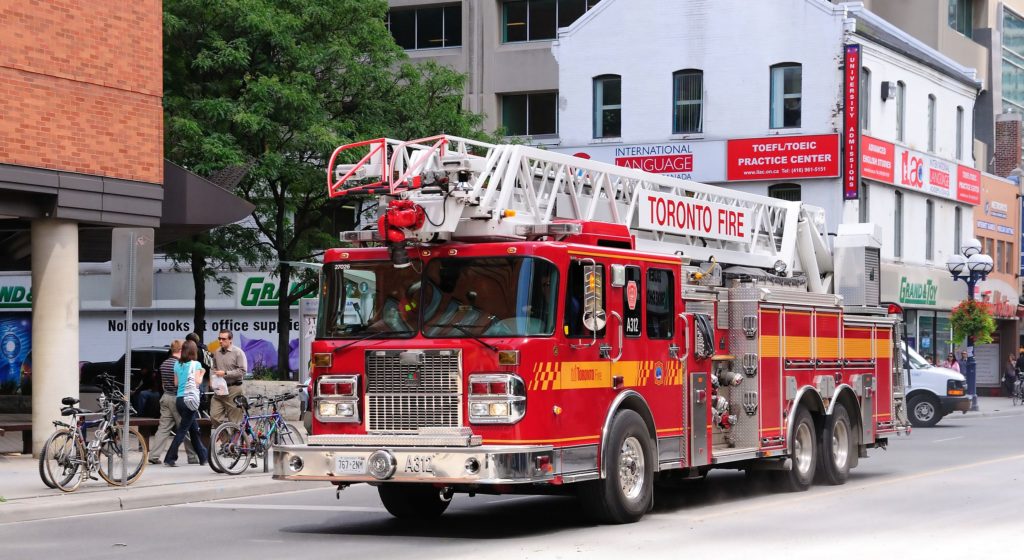- Care needed when using ethanol-fuelled firepots: McLeish - October 5, 2019
- Government changes to auto insurance need to go further, says McLeish - April 5, 2019
- Brokers have duty to inform clients of insurance options - January 5, 2019
News that the Office of Ontario’s Fire Marshal will conduct tests to better understand how hand-held fuel containers could ignite and inadvertently become flame-throwers when used around products like ethanol-fuelled lamps is a step in the right direction, says Toronto personal injury lawyer John McLeish.
“Many fire products instil a false sense of security in consumers who believe that there is little or no risk of harm,” says McLeish, a partner with McLeish Orlando LLP.
“However, as recent incidents have demonstrated, fire products can be extremely dangerous and can cause serious injury or death to users,” he says.
‘Flame jetting’
The Canadian Press reports the investigation comes as the fire marshal’s office said it has noted four instances in the last six years where “flame jetting” has occurred, leaving people with horrific injuries and, in one case, killing a woman.
“The impact of the injuries and fatalities are extreme on the people who are directly involved or in the area when it happens,” Jeff Tebby, a supervisor with the quality assurance and risk management unit at the Office of Ontario’s Fire Marshal, tells Canadian Press.
The office — which conducts fire investigations and provides fire safety guidelines in the province — will look at the factors behind flame jetting and report to Health Canada, although it will be up to the federal agency to decide what to do with the findings.
“The results of the testing will also help the fire marshal office’s staff if they are called to testify about flame jetting in court,” Tebby adds.
Died after suffering burns
McLeish, counsel for the family of a 55-year-old mother who died after suffering burns to most of her body in a 2016 flame-jetting tragedy, says better design, safer products and warnings of the dangers associated with household fire products are necessary to avoid similar incidents from happening in the future.
The family of the woman launched a $12-million negligence lawsuit against the manufacturers of the ethanol-fuelled lamp. The statement of claim alleges that the companies “designed, manufactured, packaged, and sold an unsafe ethanol-fuelled lamp and open refuelling container,” which “they failed to adequately test” before distribution.
The woman was invited to a neighbour’s cottage for a social gathering. Because of a power outage earlier in the day, the group was using an ethanol lamp as a light source. When the lamp stopped providing light, one of the hosts thought the flame had gone out. She obtained a fuel container and began pouring ethanol into the lamp. That is when a flash fire started, according to the claim.
Airlifted to hospital
The refuelling container did not have a flame arrester installed and flames shot across the room and hit the woman, the statement claim alleges. She suffered severe burn injuries on most of her body. She was airlifted to hospital but later succumbed to her injuries.
“Had there been sufficient safety precautions in place, this horrific incident could have been avoided,” McLeish alleges. “One of the main issues is that manufacturers of fire products, such as fire pits and ethanol lamps, create an illusion of safety and often do not include adequate safety features to prevent avoidable accidents.”
In a similar 2018 flame-jetting incident, a 24-year-old Ottawa woman suffered severe injuries in a friend’s backyard when a guest poured fuel on an outdoor fire pit, thinking the flames had died out. The container carrying the fuel ignited and was thrown and hit the woman. She tells the Canadian Press she was left with second-and third-degree burns on a third of her body and underwent extensive surgery. She has since called for firmer regulations around fire-related products.
Health Canada tells the newswire the ethanol bottles are subjected to regulation under the Canada Consumer Product Safety Act, which requires the products to be labelled correctly with warnings of possible hazard. However, the rules contain no information about flame arresters, which are devices that allow a flammable fuel to pass through it but prevent flames from entering the fuel source, such as a canister.
McLeish says consumers must remain vigilant to the dangers and pitfalls of household fire products.
“Much more can be done by manufacturers to improve consumer safety and they must be held accountable for their errors,” he says. “Consumers deserve better protection to ensure that they can use these products safely and confidently.”

